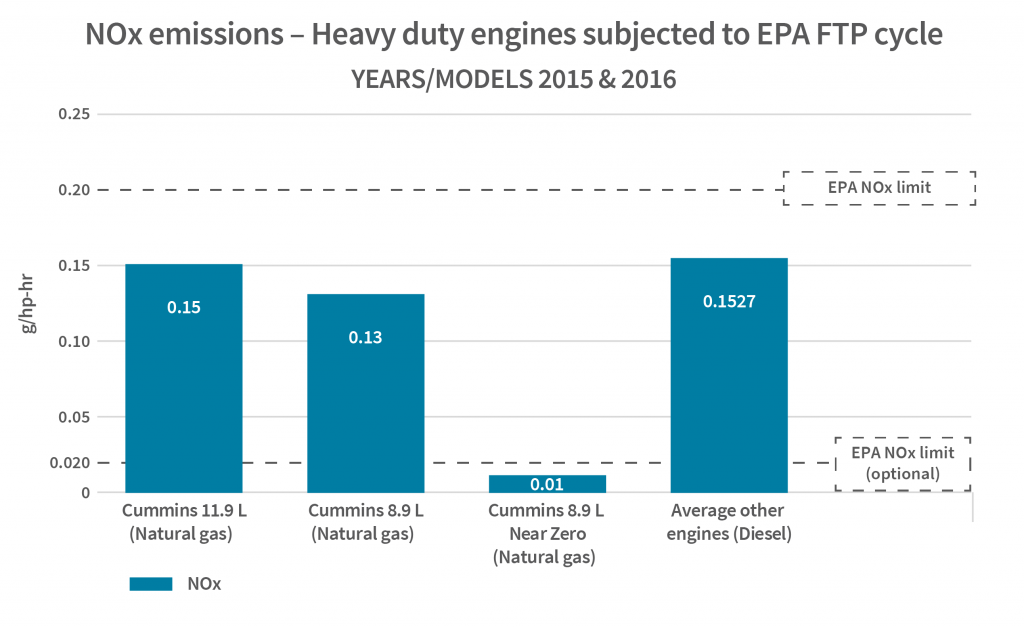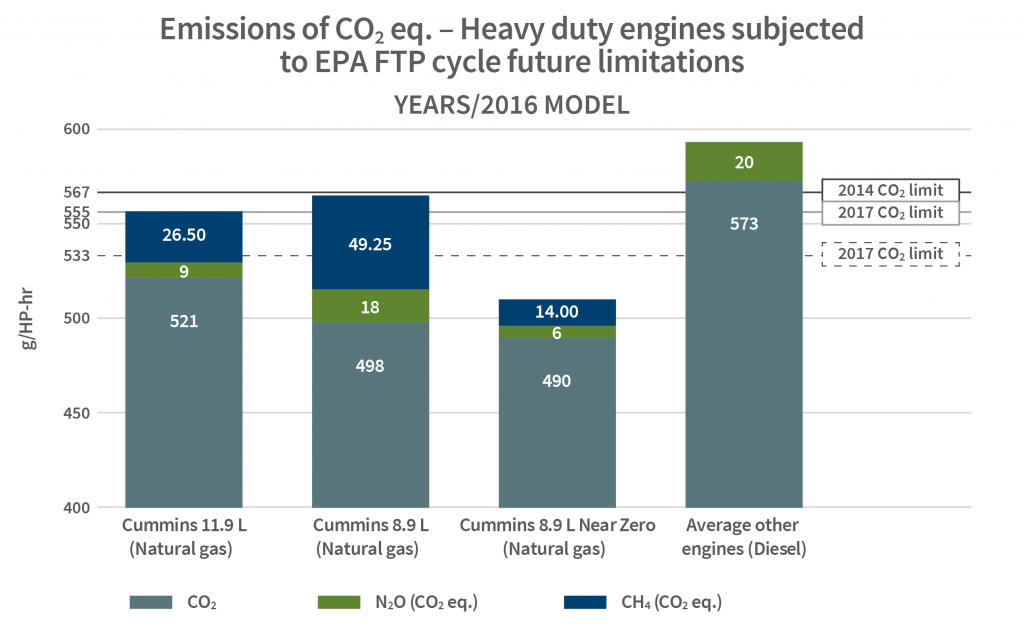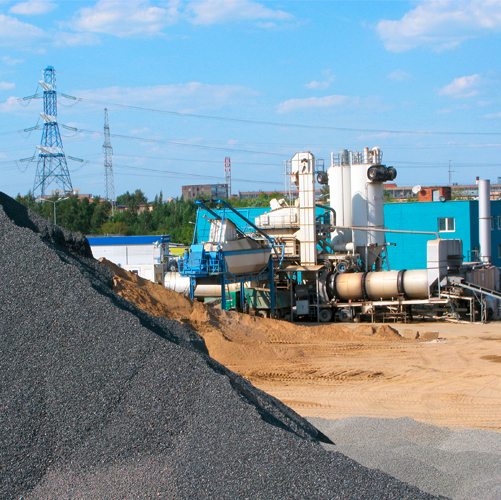At the end of 2015, North-American engine manufacturer Cummins Westport certified as almost nil the nitrogen oxide emissions (90% below U.S. Federal standards) for its very first engine geared toward heavy vehicles – the 8.9 L Near Zero. Combining the use of this type of engine with renewable natural gas produced from organic wastes or forest biomass (whose GHG emissions are considered non-existent over the life cycle of the fuel) is the best solution for significantly reducing the atmospheric pollution and GHG emissions from heavy vehicles.1 This new generation of engines paves the way to a sharp decrease in the environmental footprint of heavy trucks. In 2018, Cummins Westport expects to extend the Near Zero technology to its whole range of natural gas engines (6.7 L, 8.9 L and 11.9 L).
A game changer for heavy transport
These new engines represent a veritable revolution for the heavy transportation sector. The Game Changer – Technical White Paper describes the various opportunities linked to the commercialization of this new generation of engines and the growing use of natural gas from renewable sources.
The report asserts that, in the short and medium term, this is the best technological combination for drastically reducing the atmospheric pollution and GHG emissions from heavy vehicles. Note that the transportation sector in Québec accounts for 41% of total GHG emissions,2 33% of which are attributable to heavy trucks.
Strategy for reducing GHG emissions from heavy vehicles
The harmful effects on human health from polluting emissions from trucks are prompting more and more governments to tighten their regulatory requirements. Also, generous government incentives, particularly in California, are currently being offered to truck operators so they will choose technologies with lower emissions. To date, the technology developed by Cummins Westport generates 15 times less emissions than the average diesel engines commercialized in 2015 and 2016. In the category of combustion engines, it is the only one to emit less than 0.02 g/hp-hr of nitrogen oxide (NOx), the level defined by the optional standard for NOx emissions. This standard encourages the design of engines that emit even less NOx than those that respect the current U.S. standard.


If the combustion of renewable natural gas is taken into account, GHG emissions would be practically nil over the life cycle of the fuel. And if the very low nitrogen oxide emissions of the Near Zero engine are included, then this technological combination is close to a 100% electric engine in terms of environmental impacts.3
An economic solution
Further, according to the Game Changer report, while the technologies for heavy vehicles with electric or hydrogen batteries are evolving, they will not have any large scale commercial potential for another 10 or 20 years. The current and anticipated costs of these technologies are more than double those of a classic diesel engine, while the costs of the natural gas solution are only about 30% higher.
So, for the same amount invested in alternative fuel technology, the combination of the Near Zero engine with renewable natural gas is more efficient than electric engines in reducing GHGs and other atmospheric pollutants. Looking specifically at Québec, operating a heavy truck on renewable natural gas with a Near Zero engine has as much an impact on reducing GHGs as replacing 39 gasoline cars by 100% electric cars4 – and for 21 times less in government grants ($8,000 per electric car vs. $15,000 per natural gas truck).
These factors should create a strong demand for the Near Zero technology.
High potential with renewable natural gas as a fuel
In California, more than 57% of natural gas used as a fuel is from a renewable source,5 that is, more than 257 million m3, or enough to operate more than 5,000 heavy trucks.
Québec is not far behind, since the four public compressed natural gas (CNG) stations operated by EBI are supplied annually by 5.5 million m3 produced from its landfill site in Berthierville. This represents 28% of all natural gas consumed as a fuel in Québec last year6 at all 10 public natural gas stations for vehicles using the Blue Road, whose network of compressed and liquefied natural gas destined for road carriers extends from Cornwall (Ontario) to Rivière-du-Loup (Québec). Another 18 private stations are also in service in Québec.
The supply of renewable natural gas should increase in the coming years since several Québec municipalities are planning biomethanation projects that could, in time, generate more than 56 million m3 of renewable natural gas.
In summary, the growing availability of renewable natural gas, the desire of governments to reduce the emissions generated by heavy vehicles, and the commercialization of the new Near Zero technology by Cummins Westport, position natural gas as the solution of choice for replacing diesel.
David Ducasse, Eng.
DATECH Advisor, NGV Technologies
Gaz Métro
1 Game Changer – Technical White Paper, published by Gladstein, Neandross & Associates (GNA), May 2016.
2 Quebec inventory of greenhouse gas emissions in 2014 and their evolution since 1990.
3 Game Changer – Technical White Paper, published by Gladstein, Neandross & Associates (GNA), May 2016.
4 GNR heavy truck = ↓195 tonnes GHGs; electric car = ↓5 tonnes GHGs.
5 On line: https://www.fleetsandfuels.com/fuels/cng/2016/04/rng-in-california-more-than-you-think/.
6 Internal data, Gaz Métro.
![]()








